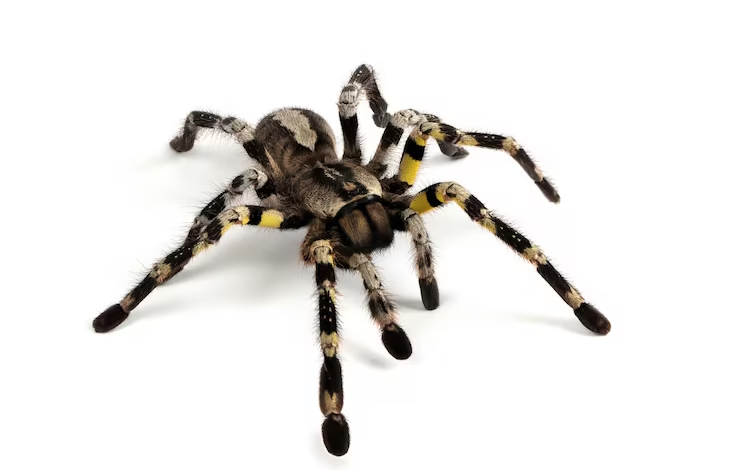Two spiders on the roof seeker77

Last summer, I found myself on the roof of my old apartment building, chasing a whim that I now call my “Seeker77” moment. The nickname, inspired by my love for late-night adventures and a nod to my favorite sci-fi novel, felt fitting as I stood under the stars, staring at the city skyline. Little did I know, my rooftop escape would lead to an unexpected encounter with two spiders that changed how I see the world of urban wildlife.
It was a warm July evening, the kind where the air feels thick with possibility. I’d climbed up to the roof to clear my head after a long day, armed with a flashlight and a notebook to jot down thoughts. The roof, a flat expanse of gravel and tar, was my secret sanctuary—a place where I could escape the noise of the city below. As I settled onto an old lawn chair, my flashlight beam caught a glimmer of something delicate: a spider web, stretched like a gossamer bridge between two rusted vents. And there, in the center of this tiny masterpiece, sat two spiders.
Meeting the Rooftop Residents
At first, I froze. Spiders, with their eight legs and silent movements, have always sparked a mix of awe and unease in me. But these two were different. They weren’t scurrying away or hiding in the shadows. They sat boldly in their web, their bodies glinting under the moonlight like tiny jewels. One was larger, with a bulbous abdomen marked with faint yellow stripes. The other was smaller, more delicate, with legs that seemed to dance as it adjusted the web’s threads.
I named them Seeker and Scout, partly because of my “Seeker77” persona and partly because they seemed like explorers in their own right, navigating the rooftop ecosystem. As I watched, I realized this wasn’t just a random encounter—it was a glimpse into a hidden world. These spiders weren’t just creepy crawlies; they were architects, hunters, and survivors thriving in an urban jungle.
Understanding Spider Behavior
Curiosity got the better of me, and I started researching spider behavior to understand what I was witnessing. Spiders, or arachnids, are fascinating creatures. Unlike insects, they have eight legs, no antennae, and a knack for building intricate webs to catch prey. The two spiders on my roof were likely orb-weavers, a common family known for their wheel-shaped webs. Orb-weavers are nocturnal creatures, rebuilding their webs at night to catch unsuspecting insects drawn to city lights.
What struck me was how these two spiders worked together. Most orb-weavers are solitary, but occasionally, you’ll find them sharing space, especially in resource-rich environments like a rooftop buzzing with moths and flies. The larger spider, Seeker, seemed to dominate the web, making bold repairs while Scout darted around the edges, perhaps reinforcing the structure or catching smaller prey. Their teamwork was a reminder that even in nature, collaboration can be key.
Spiders use their webs not just for hunting but also for communication. The vibrations of a struggling insect or a gentle breeze send signals through the silk, telling the spider exactly where to strike. Watching Seeker and Scout, I imagined them as rooftop sentinels, reading the world through their web like a musician reading sheet music. It was a humbling thought: these tiny creatures had mastered a skill humans could only dream of.
The Rooftop Ecosystem
My rooftop wasn’t just a place for stargazing—it was a thriving ecosystem. The gravel crunched underfoot, hiding tiny insects that likely served as spider snacks. The vents and cracks provided shelter, while the city lights attracted moths and flies, creating a buffet for Seeker and Scout. This urban wildlife scene was a stark contrast to the concrete jungle below, where nature often feels like an afterthought.
I started noticing other signs of life up there: a cluster of ants marching toward a forgotten crumb, a lone beetle scuttling across a pipe, and even a brave lizard that occasionally darted out to snatch a bug. The roof was a microcosm, a place where nature carved out a space despite the city’s sprawl. Seeker and Scout were the kings of this domain, their web a testament to their resilience.
A Personal Connection to Nature
As someone who grew up in a small town surrounded by fields and forests, I’ve always felt a pull toward nature. Moving to the city was a shock—gone were the open spaces, replaced by skyscrapers and honking cars. Finding Seeker and Scout on the roof felt like rediscovering a piece of that lost connection. They reminded me that nature doesn’t just exist in far-off forests; it’s right here, in the cracks and corners of our urban lives.
I started visiting the roof nightly, not just to escape but to observe. I’d watch Seeker rebuild the web after a windy night, marveling at the precision of each thread. Scout, the smaller spider, seemed to have a knack for catching tiny gnats, darting across the web with a speed that defied its size. These observations became my therapy, a way to slow down and appreciate the small wonders around me.
One night, I brought a friend up to the roof to share the experience. She was skeptical at first, wrinkling her nose at the idea of watching spiders. But as we sat quietly, watching Seeker and Scout dance across their web, she softened. “They’re kind of beautiful,” she admitted, her voice hushed. That moment felt like a victory—not just for me, but for the spiders, who’d won over a skeptic with their silent grace.
The Mystery of Seeker77
The “Seeker77” part of this story isn’t just a nickname—it’s a mindset. To me, it represents the curiosity that drives us to explore the unknown, whether it’s a distant planet or a rooftop in our own backyard. Seeker and Scout embodied that spirit, navigating their tiny world with purpose and skill. I started to see parallels between their lives and mine. Like them, I was weaving my own web, trying to find my place in a chaotic world.
I wondered about the “77” in my nickname. Maybe it was the number of stars I could count from the roof, or the number of times I’d climbed those creaky stairs to escape my worries. Whatever it was, it felt like a badge of honor, a reminder to keep seeking, keep exploring, even when the world feels overwhelming.
Why Spiders Matter
Spiders often get a bad rap. They’re the stuff of nightmares for some, with their hairy legs and sudden movements. But spending time with Seeker and Scout taught me to see them differently. Spiders are nature’s pest controllers, keeping insect populations in check. Without them, our rooftops and gardens would be overrun with flies and mosquitoes. They’re also artists, crafting webs that rival the finest lace.
In urban environments, spiders like Seeker and Scout play a crucial role. They adapt to concrete landscapes, finding ways to thrive where others might fail. Their presence is a reminder that nature is resilient, always finding a way to persist. By observing them, I learned to appreciate the balance of ecosystems, even in the heart of the city.
Tips for Your Own Rooftop Adventure
Inspired by my rooftop discovery, I encourage you to explore the hidden corners of your own world. Here are a few tips to start your own “Seeker77” adventure:
-
Find a Quiet Spot: Whether it’s a rooftop, balcony, or backyard, look for a place where you can observe nature undisturbed.
-
Bring a Flashlight: Many creatures, like spiders, are active at night. A flashlight can reveal hidden worlds.
-
Stay Curious: Approach your observations with an open mind. Even a common spider can teach you something new.
-
Take Notes: Jot down what you see, whether it’s a spider’s web or a bird’s flight. These notes can become a personal record of your discoveries.
-
Respect Nature: Avoid disturbing the creatures you find. Watch from a distance and let them do their thing.
The Legacy of Seeker and Scout
As summer turned to fall, the nights grew cooler, and Seeker and Scout’s web began to fade. One evening, I climbed to the roof to find their web tattered, the spiders gone. I felt a pang of sadness, but also gratitude. Those two spiders had turned a mundane rooftop into a place of wonder, teaching me to look closer, to seek out the beauty in the everyday.
Their story lives on in my notebook, in the sketches of their web and the stories I share with friends. They’ve inspired me to keep exploring, to keep seeking, whether it’s on a rooftop or beyond. And who knows? Maybe somewhere, in another corner of the city, Seeker and Scout are still spinning their webs, still thriving in their rooftop kingdom.
Final Thoughts
The tale of two spiders on the roof is more than just a story—it’s a reminder that adventure and discovery are all around us. Seeker77 isn’t just a name; it’s a call to curiosity, a challenge to find the extraordinary in the ordinary. So next time you’re out in the world, look up, look down, look closer. You might just find your own Seeker and Scout, waiting to share their secrets.



